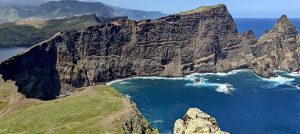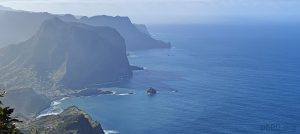Looking for a peaceful alternative to Pico do Furado’s hustle and bustle? A relaxing drive on winding Madeiran roads (don’t worry, the switchbacks are manageable!) leads me to the Pico do Castanho trailhead. This cozy parking lot, sized for a small adventure crew (think 3-4 cars!), welcomes me with open asphalt. Looking back, I see the peak in the trees. It doesn’t look high, and it isn’t. Just a couple hundred meters of vertical ascent. Shoes laced up, and i’m off to explore Pico do Castanho!

Surprise! Unlike the well-documented Pico do Furado, Pico do Castanho seems to be a hidden gem among peakbaggers. While I braced myself for some bushwhacking, the trail unfolded before me – well-maintained and cleverly designed with switchbacks to ease the climb. Dotting the route were a few simple shelters or perhaps even old farmhouses, their surrounding fruit trees bursting with life.



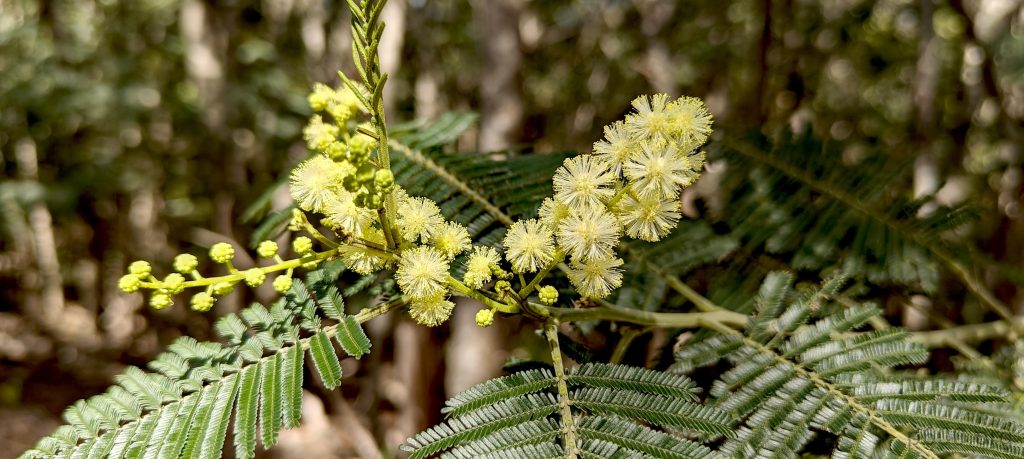

Engrossed in conversation with Ingrid on the phone, I nearly miss the summit! Thankfully, the usual black and white trig pillar stands out, marking the peak. My phone GPS shows an altitude of 624m, but I know satellite readings aren’t always perfect. Since I have a topographical map, I head towards the bump, about 220m to the north. Reaching it, my GPS shows 619m elevation, but matching the peakbagger location. Dense forest blocks any view, and without a hand level, I can’t definitively say which is higher.
Intriguingly, even though the topographical map shows the same elevation for both peaks, two factors nudge me towards the south bump as the true high point. First, the presence of the trusty trig pillar – a indicator, although not absolute, of the highest point. Second, my GPS, despite its potential for margin of error, consistently reads a slightly higher elevation for the south bump. On the return trip, another measurement confirms 624m for the south peak. These arguments might not be flawless, but with limited tools, quantity becomes quality! Two imperfect pieces of evidence feel more persuasive than blindly following the peakbagger app. Therefore, I’m crowning the south bump the victor, even though I’ve bagged both!
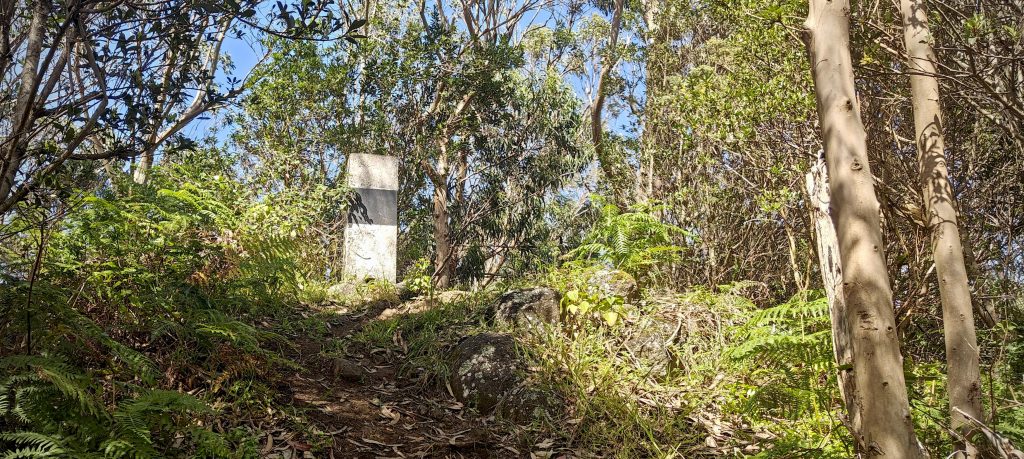
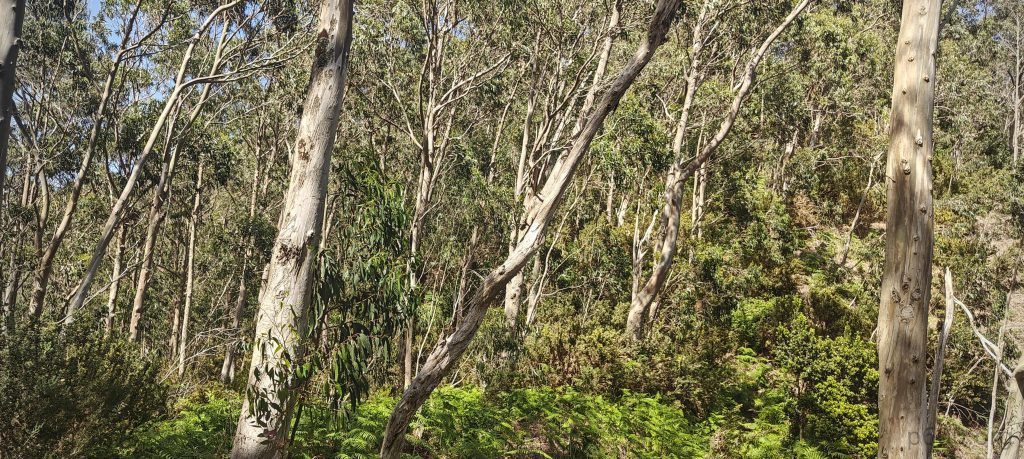
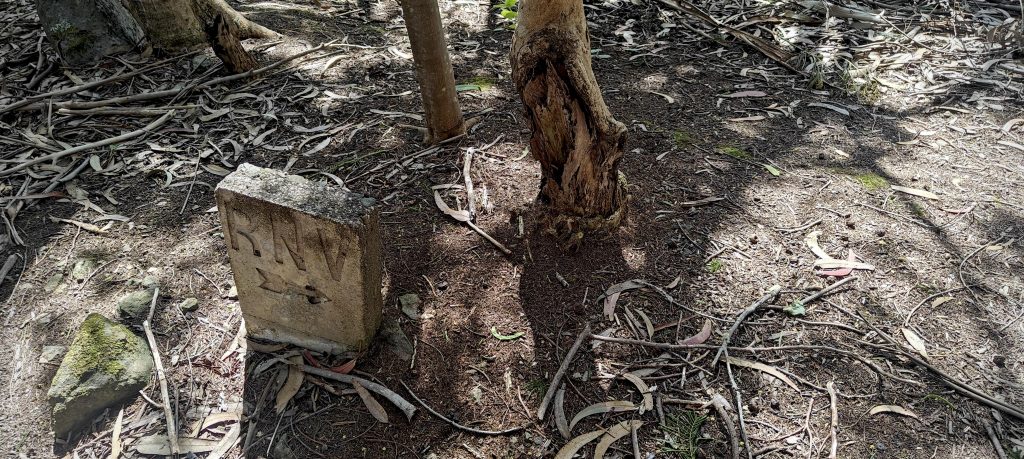
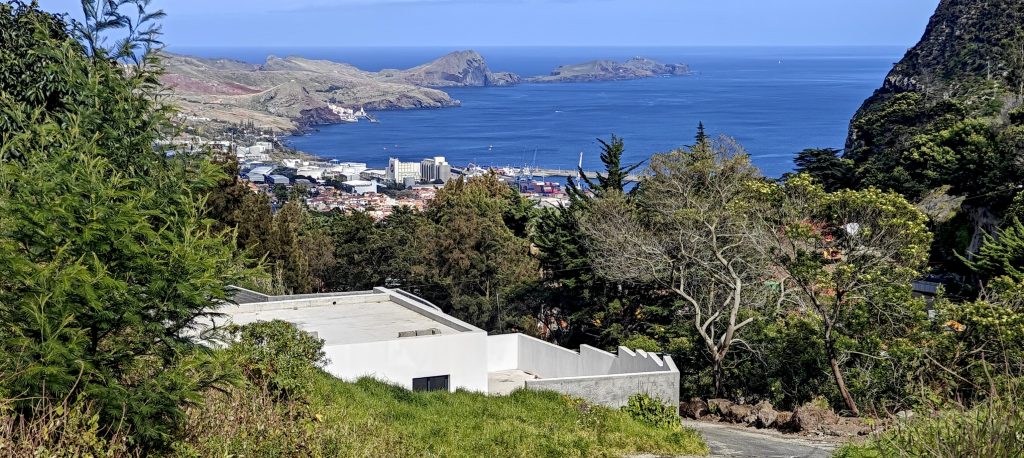
Pico do Castanho, interestingly enough, translates to “Brown Peak.” While the name might conjure images of a more barren landscape, I found it to be a vibrantly green and thoroughly enjoyable hike. Two things made it particularly special: having the entire trail to myself and the fact that, to date, no other peakbagers seems to have documented it online. I’m confident I have enough daylight left to tackle at least three more peaks: Pico da Coroa, Penha d’Águia, and finally, Pico do Facho.


